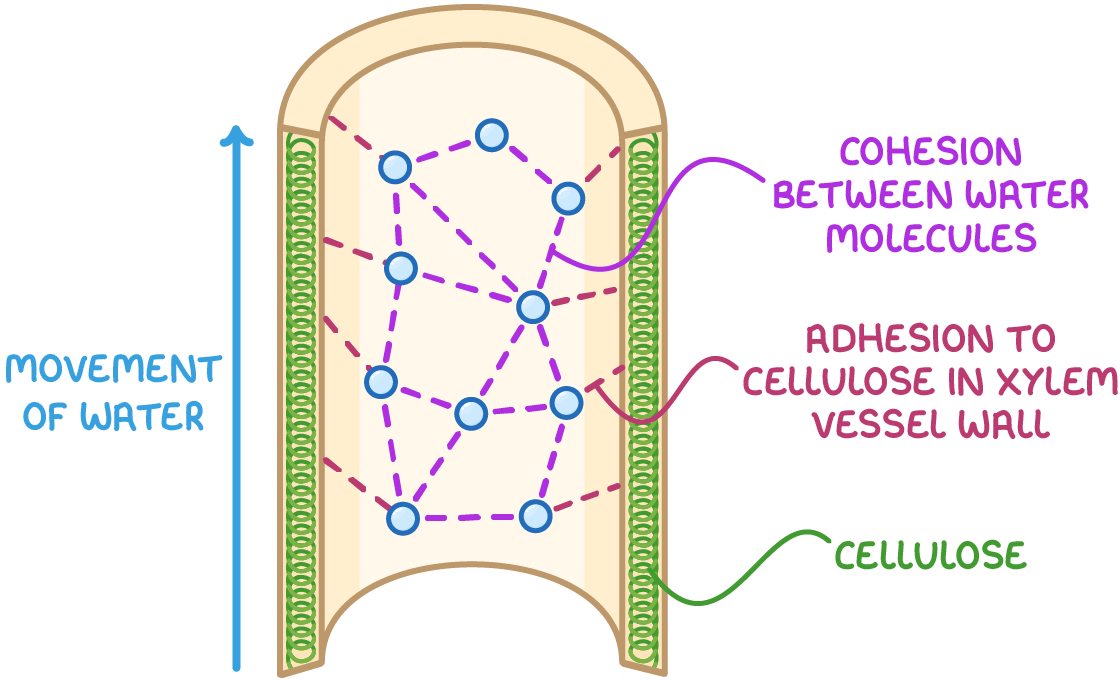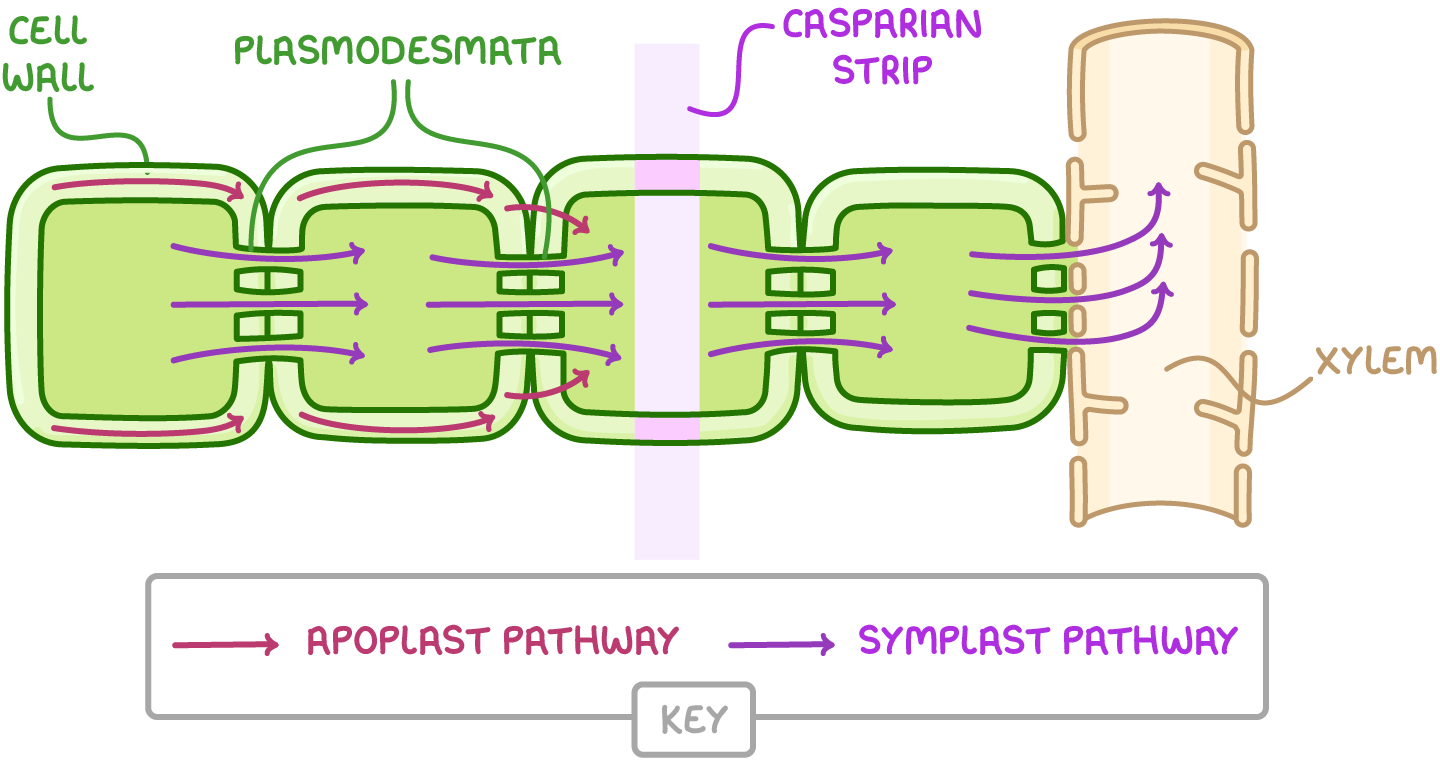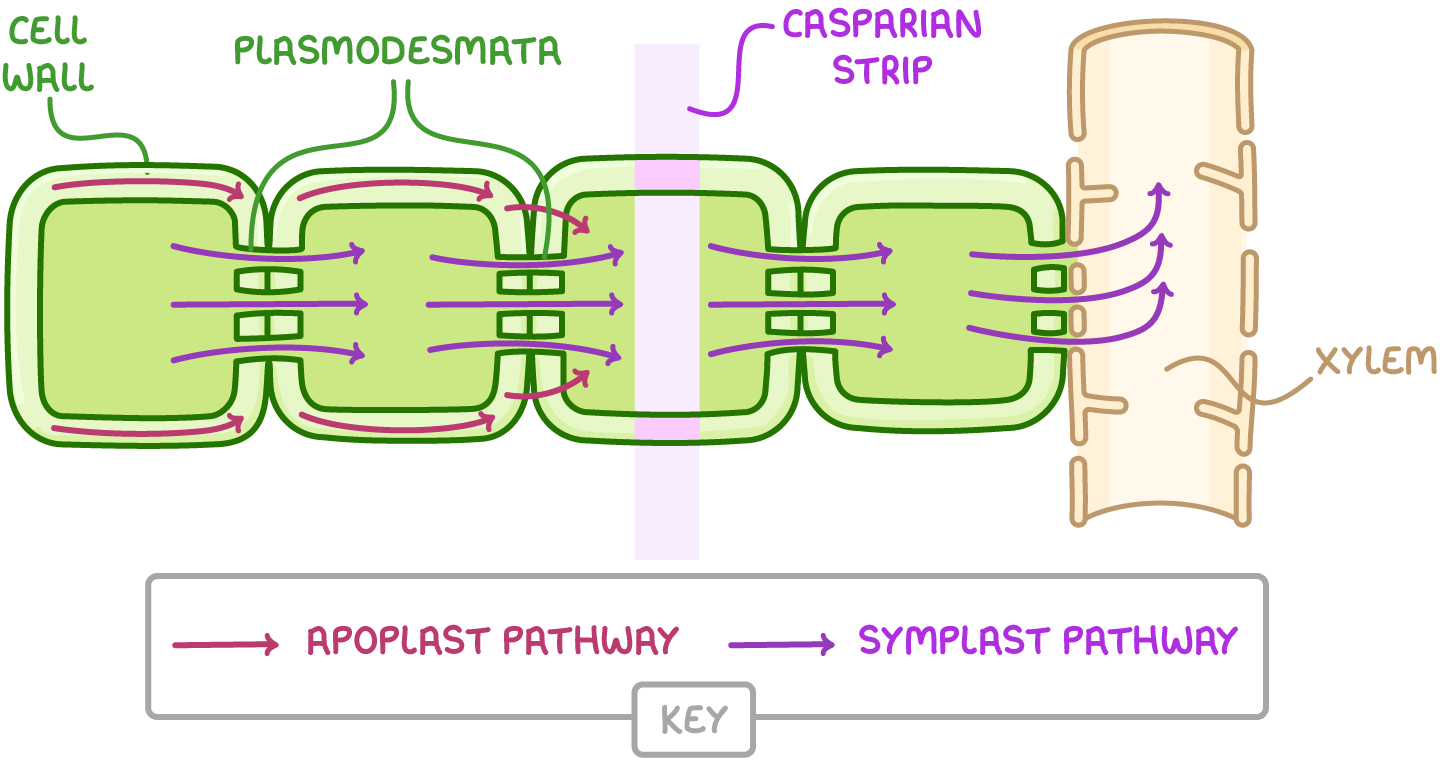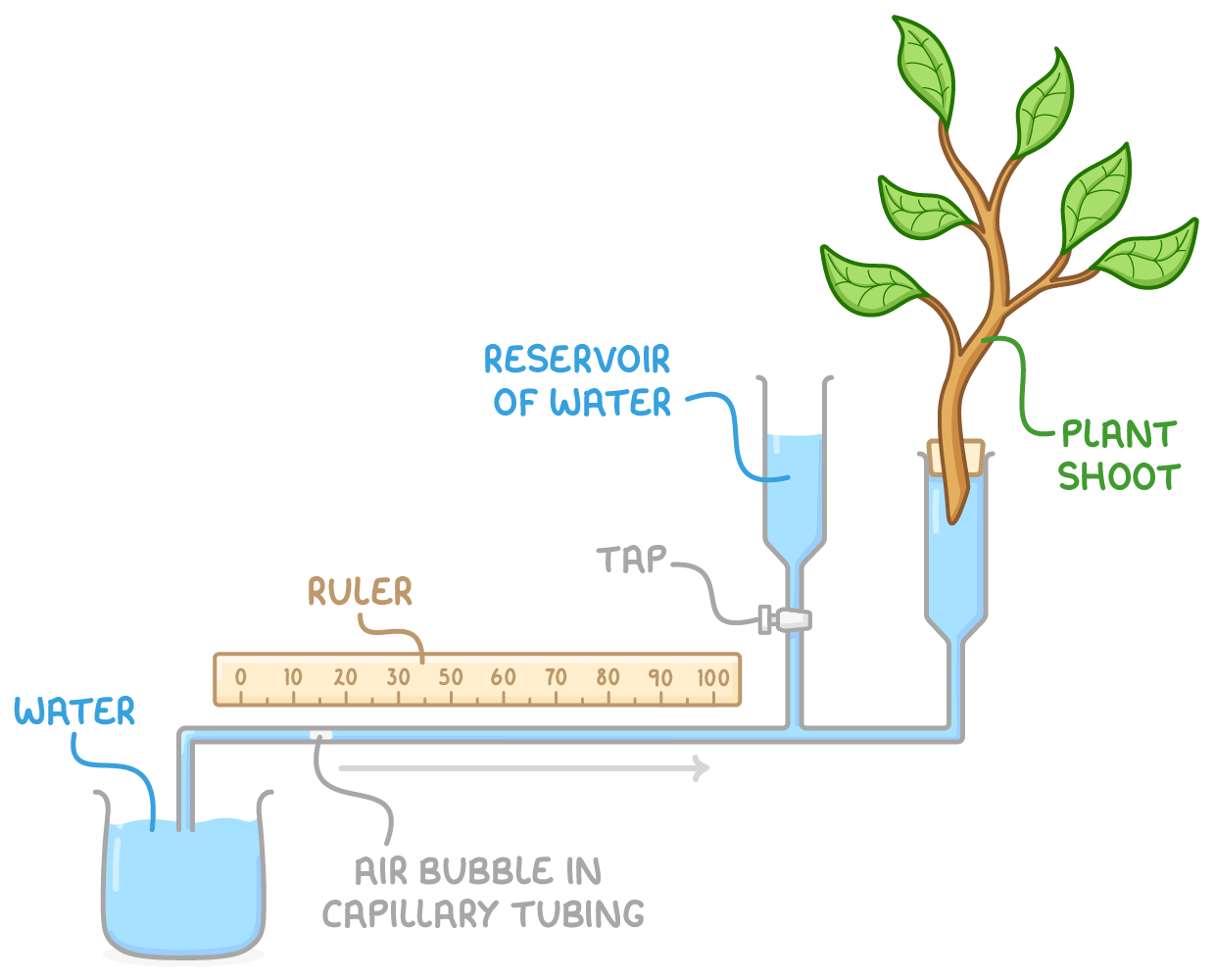transpiration
1/16
Earn XP
Description and Tags
+ intro to mass transport
Name | Mastery | Learn | Test | Matching | Spaced |
|---|
No study sessions yet.
17 Terms
what is mass transport?
movement of fluids down a pressure gradient
(can occur over long distances)
what is the transpiration stream?
movement of water and dissolved ions up a plant
why is transpiration necessary for a plant?
provides water for photosynthesis (compromise between losing water and taking in CO2)
allows mineral ions to be transported from roots to leaves
evaporation has a cooling effect on leaves, preventing enzymes denaturing
what is transpiration?
process by which water is lost from the leaves by evaporation and diffusion
describe the process of transpiration:
water evaporates through surface of cell walls ∴ internal leaf spaces contain high conc of water vapour → water vapour diffuses out of leaf to external air
Ψ in nearby spongy mesophyll cells decreases so water is driven in through osmosis cell by cell until the xylem is reached, creating a -ve hydrostatic pressure = tension
tension pulls water molecules from the xylem because they are all cohesively bound to each other by H bonds, preventing collapse
charged ions are attracted to the polar H2O molecules so travel up w/ the H2O
this is ∴ mass transport - water moves down a hydrostatic pressure gradient
what is root pressure?
(only used in young plants/deciduous trees when leaves are developing and transpiration rates are low)
mineral ions are actively transported (active process!) into the xylem, decreasing Ψ
this means more osmosis occurs and so a higher hydrostatic pressure
this root pressure pushes contents of the xylem upwards
give 4 factors affecting transpiration rate:
temperature
humidity
wind speed
light intensity
describe and explain how temperature affects transpiration rate:
as temp increases, transpiration rate increases
this is because the KE of the water molecules increases, so water molecules move faster, meaning faster evaporation
describe and explain how humidity affects transpiration rate:
as humidity increases, transpiration rate decreases
because the ψ atmosphere increases
this decreases the water vapour gradient between the leaf and the atmosphere
describe and explain how light intensity affects transpiration rate:
as LI increases, transpiration rate increases
as more stomata open for max CO2 absorption
so more water evaporates out of stomata due to increased diffusion gradient
describe and explain how wind speed affects transpiration rate:
as wind speed increases, transpiration rate increases
this is because lots of air movement causes water molecules to travel away from the stomata
this increases the water vapour gradient between the leaf and atmosphere
describe the cohesion-tension theory of transpiration:
cohesion:
water is a dipole - H bonds form between the H and O of water molecules
this creates cohesion between water molecules, making them stick together so water can travel up xylem as a continuous water column
adhesion:
H bonds form between polar water molecules and non polar cellulose in xylem vessel walls
this pulls water up xylem
tension:
evaporation of water at lead surface creates tension
this pulls water up through xylem

describe the movement of water through the cell wall (apoplast) pathway:
water moves w/in cell walls and spaces between cells - water moves easily between cellulose fibres
as water osmoses into xylem and is carried away, more water moves along the cell wall pathway due to cohesion
(offers much less resistance to water flow than symplast)

describe the movement of water through the cytoplasmic pathway (symplast):
water moves from the cytoplasm of one cell to cytoplasm of an adjacent cell through plasmodesmata
water osmoses across cells in cortex down ψ potential gradient between root hair cells and xylem
(slow as water pathway in cytoplasm obstructed by organelles)

what is the Casparian strip? what is its function and significance?
band of suberin (waterproof substance) which surrounds endodermis cells
forces water out of cell wall pathway and into cytoplasmic pathway
allows cell membrane to control which substances can enter xylem
how can we use a potometer to measure the rate of transpiration?
cut shoot underwater to prevent air entering xylem and at a slant to increase SA available for water uptake
assemble potometer in water and insert shoot underwater so no air can enter
remove apparatus from water but keep end of capillary tube submerged in beaker of water
check that apparatus is watertight and airtight
dry leaves, allow time for shoot to acclimatise and shut the tap
remove end of capillary tube from beaker of water until one air bubble has formed then put back into water
record starting position of air bubble
start stopwatch and measure and record distance moved by bubble per unit time - this is an estimate of the transpiration rate
repeat at different LIs/temps/humidity/wind speeds

what assumption does the use of a potometer make?
water uptake by a plant is directly related to water loss by leaves